Customer behaviour has changed dramatically in recent years. According to Forbes, consumers are becoming more demanding in various aspects, including product transparency, seamless online experiences, personalized content, and more. In order to meet – or exceed – customers’ expectations, it’s critical for brands to accompany their customers every step of their journey. One way to do that is through omnichannel customer service.
What is omnichannel customer service?
Omnichannel customer service is the integration of systems to establish a streamlined shopping experience for customers across all channels. These channels include ecommerce, applications, physical stores, and web browsers.
This is quite different from the traditional, multichannel services. Multichannel approaches cover many platforms, but don’t tie them together. Omnichannel customer services focus on combining every channel, empowering consumers to have more control in their own personal journey of purchase.
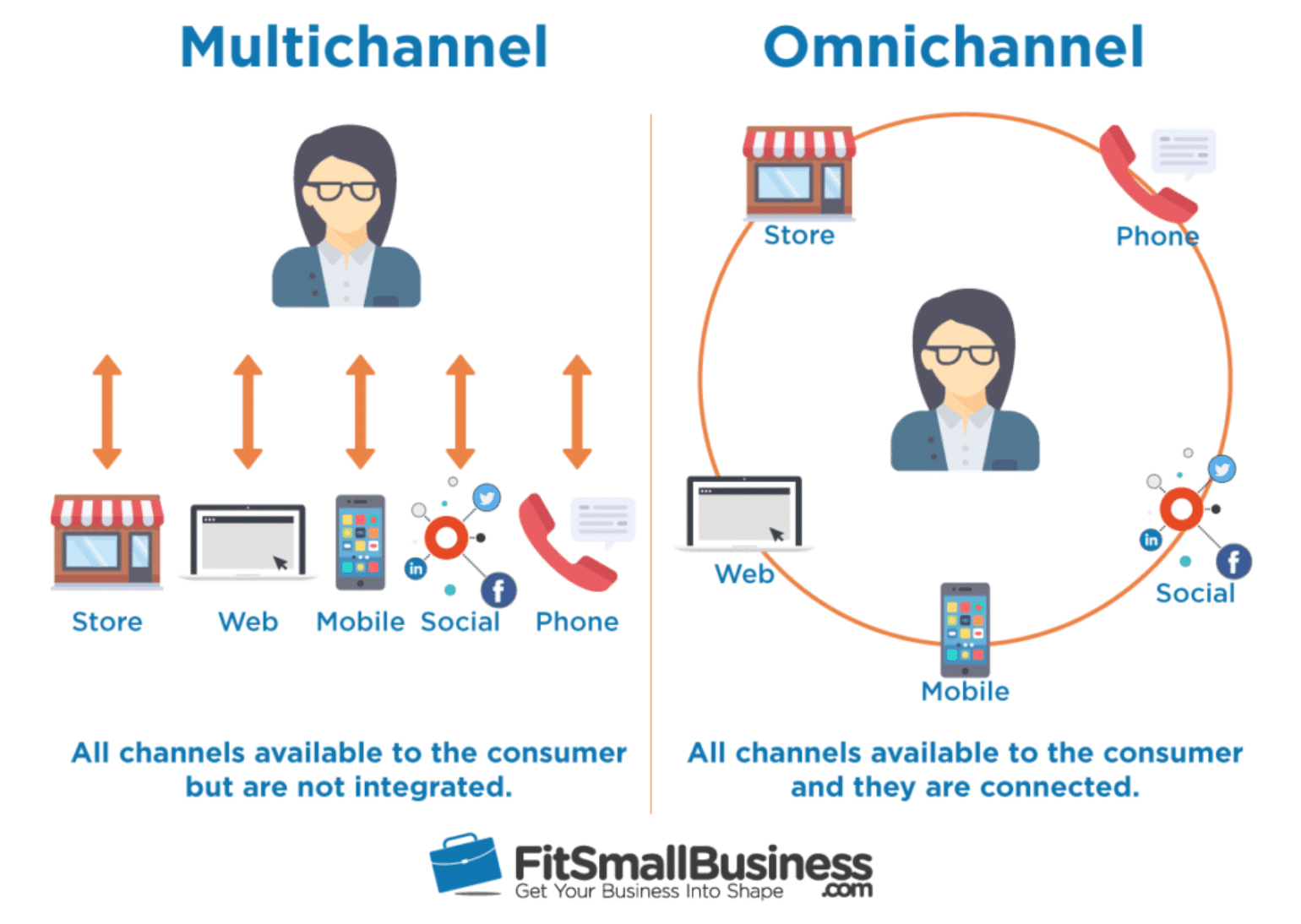
Source: FitSmallBusiness
Benefits of omnichannel customer service
More and more organizations are embracing omnichannel customer services. Omnichannel customers tend to spend more in-store and online than single-channel customers. Retailers using omnichannel marketing saw a 15% to 35% increase in average transaction size. Some of the key benefits of omnichannel customer service include:
- Maximize your support agents’ productivity
- Save on expensive call center costs
- Improve customer response time
- Offer more options for customers to interact with your brand
- Provide seamless customer experience with personalized content
- Leads to better customer retention and sales
- Integrate online and offline experiences
- Finetune the way of collecting customer data
- Help your brand reach a wider range of audiences
Despite the above-mentioned benefits, the proliferation of omnichannel still needs to be implemented carefully. With the prevalence of social apps like Facebook, Instagram, and WhatsApp, customers are provided with multiple touch points with a brand. This could lead to your service agents feeling overwhelmed by context coming from everywhere.
Businesses need to focus on providing your customers with the right information at the right time. After all, an excellent omnichannel experience will only work when seamless customer services are properly connected with communication methods.
Wondering how to do it right? Let’s take a look at seven brands with excellent omnichannel strategies in place.
7 brilliant omnichannel customer service examples
1. Starbucks
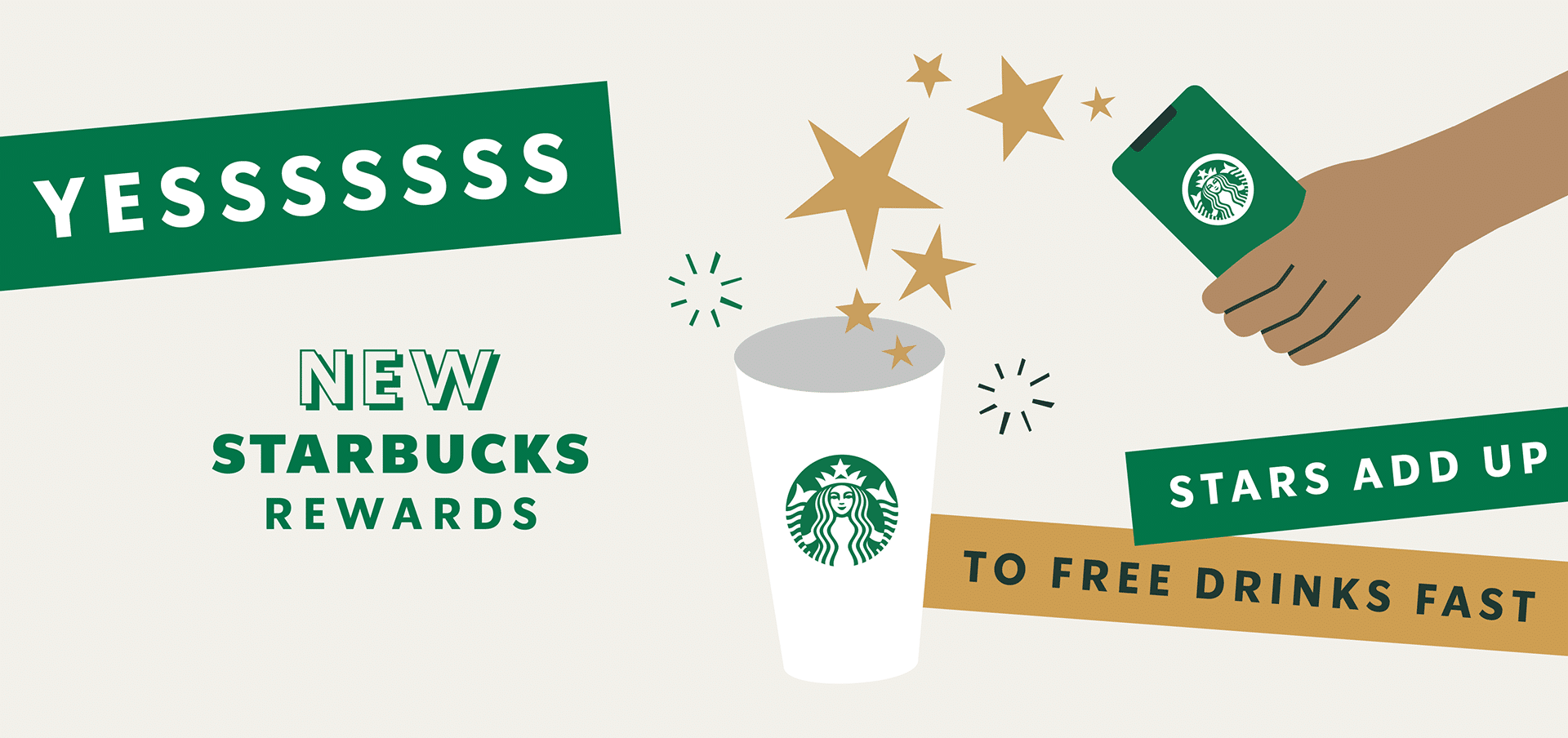
Source: Starbucks
Starbucks’ success lies in their mobile application, My Starbucks Reward. In fact, their mobile purchases are surging – with nearly 40% of their revenue comes from My Starbucks Reward app. Though their order-ahead feature brings in more than 8 million mobile transactions every month, customers are engaging regularly with the brand for more than simple convenience.
My Starbucks Rewards perfectly aligned business goals with their customer journey. The app streamlines each transaction with order, tipping, payment, and has a great rewards scheme. Customers can further view and load their rewards card via app, website, mobile phone or in-store with immediate account updates across all channels.
Starbucks uses omnichannel funnels to convert new customers and increase customer loyalty simultaneously. They initiated a digital relationship with their customers via email campaigns, flash sales, and in-app personalization. Starbucks incessantly incentivises consumers through behaviour like ‘Buy one, get one free’ on specific days.This tactic helps increase in-store sales, online brand engagement and customer satisfaction.
Importantly, all of these online consumer activities are being tracked and analysed to help the brand pinpoint areas that need improvement – for instance, providing more personalised product suggestions.
2. Disney
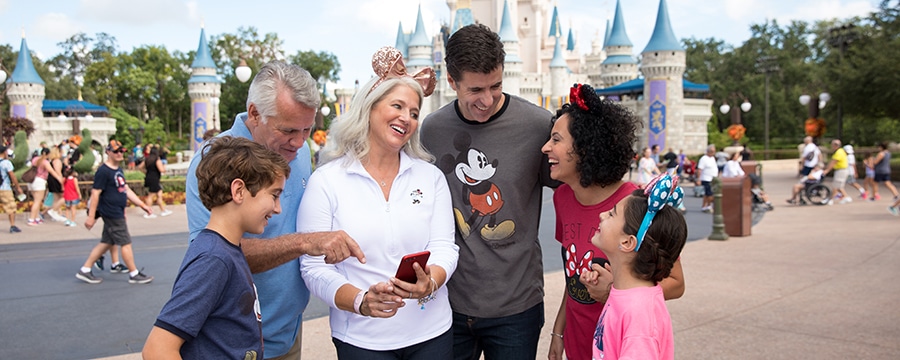
Source: Disney
Disney perfectly integrates customers’ omnichannel experience with digital technology. For one thing, customers are guaranteed to enjoy a user-friendly browsing experience, whether it’s from desktop or mobile sites. Yet, Disney put extra efforts and designed the genius tool: My Disney Experience that beautifully integrates beacon technology with wearable technology.
My Disney Experience is an application that seamlessly connects their activities within the theme park. From tickets to the photos you took at the park, everything can be synced across different channels and allow you to instantly access them whenever, and wherever, you like. It can manage your hotel and dining activities, as well as plan park activities for you. It even lets you add family members to friend lists.
The beacon technology not only helps customers make their way around the park, but enables Disney to collect valuable data such as crowd traffic or waiting time. My Disney Experience also lets you add credits to a Magic Band, which is a bracelet you wear when you are navigating in the park. Magic Band works similarly like a smart watch – you can pay for meals and souvenirs, open your hotel room, and use it as a Fast Pass! It’s pretty much the ideal example of an omnichannel customer experience.
3. Chipotle
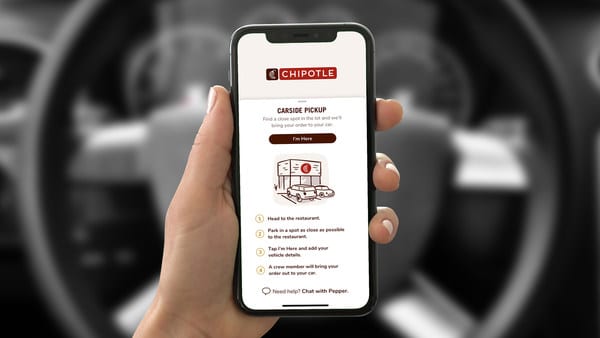
Source: Chipotle
Chiptole has done well throughout the brand’s digital transformation. The burrito giant started by introducing a mobile app that meets both new and old customers’ needs. Old customers are able to select their regular favorites faster and new customers can make their first order through intuitive and easy-to-follow in-app instructions.
Later on, Chipotle also revamped their website, launched their customer loyalty program, and collaborated with DoorDash delivery services to further strengthen their customer experience both online and offline.
Examples of omnichannel interactions include the app suggesting the last location they placed an order, or the on-the-go ordering feature to order in advance of reaching a store. As Chiptole doubled down on in-app innovation, online order-only drive-thrus and human-centered marketing, they’ve doubled their revenue by more than 200%.
As more consumers are more conscious about the impact their behaviour may have on the environment, Chiptole uses Real Foodpoint to express their concerns in worsening environmental issues and demonstrate social responsibility. Modern customers expect brands to form a deeper relationship with them, and addressing ecological concerns is a great way to do so.
4. Sephora
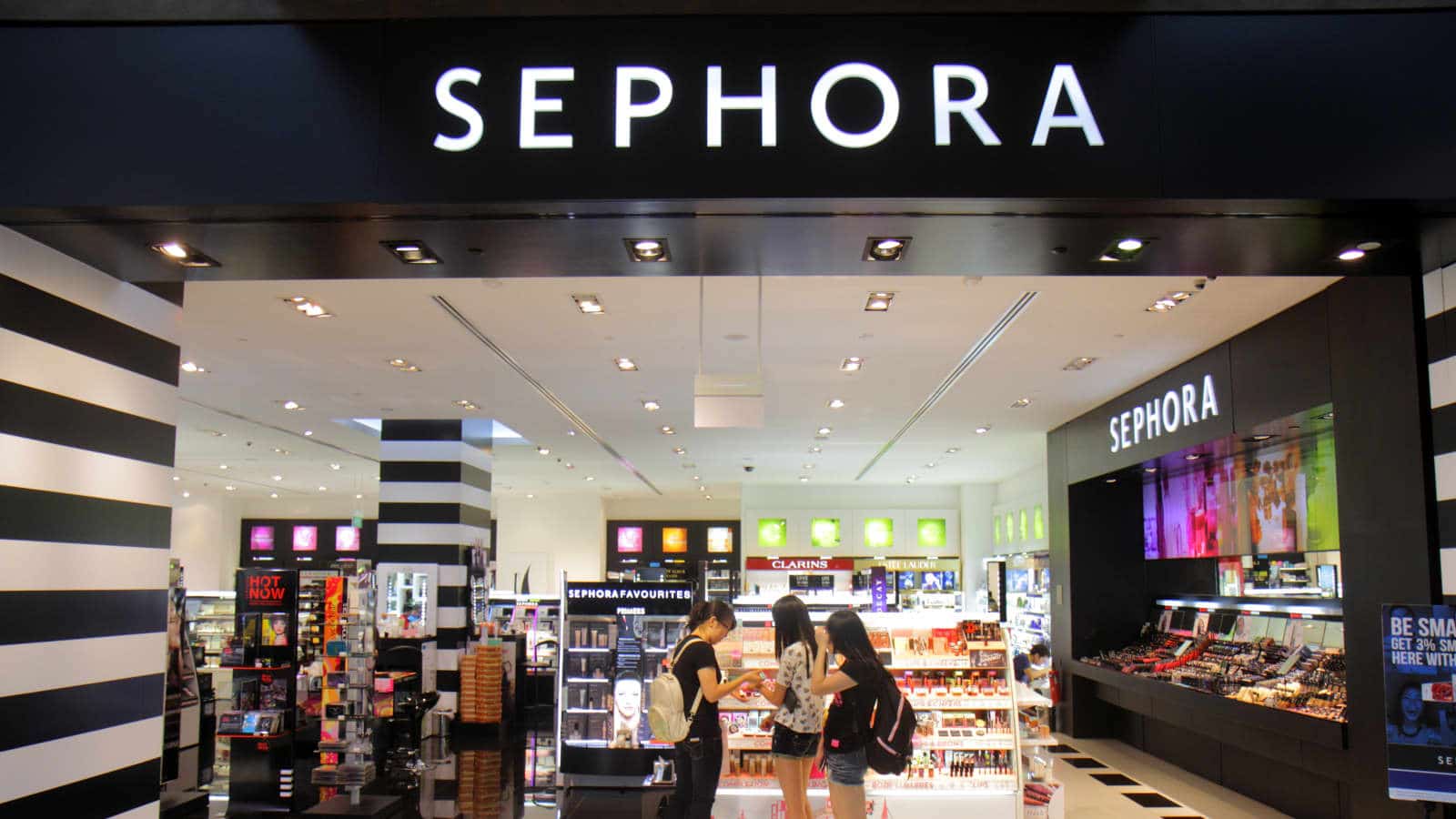
Source: GlobalMarketingProfessor
Sephora enhances their omnichannel customer experience by connecting their online purchases to their in-store visits. The beauty giant introduced “Beauty Bag”. This is an account that allows customers to look up product details and try them on using virtual reality technology. If they like the product, they can add it to a wishlist and then purchase the entire list using the app.
Sephora is also integrating online account information with in-store communication channels using location-based marketing. When customers are shopping in physical stores, the app can help them narrow down their choices and keep track of the products they intend to purchase.
Of course, not everyone will have mobile access – so Sephora also places several tablets in stores meaning they can still access their Beauty-Bag account .
They also used these strategies to weather the Covid-19 pandemic. Sephora moved all in-store experiences online by introducing augmented reality fitting rooms, as well as Color IQ. It scans customers’ skin to match it with the right foundation, resolving a huge pain point for cosmetic shoppers.
5. Timberland
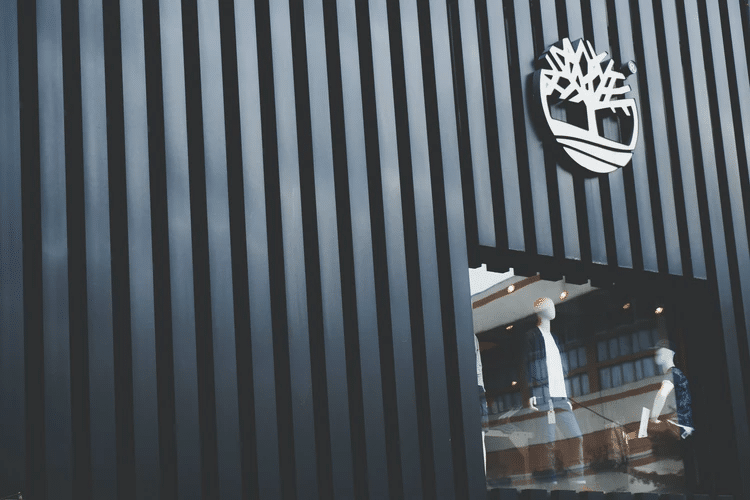
Source: Unsplash
Timberland connects brick-and-mortar customer service with near-field communication technology. Near-field communication technology is a data transfer software like Apple Pay or Android Pay, which allows users to transfer information seamlessly by tapping their mobile devices against a special chip.
Timberland is another brand that integrates mobile tablets to enhance their retail performances. When shoppers are in a Timberland store, they are given tablets that can display product information as well as current deals or offers. Timberland empowers their customers to have more control in their shopping journey while minimizing time wasted on waiting for the clerks to explain the product when the store is crowded.
It goes beyond the immediate in-store experience, however. Their digitally connected stores allow customers to create a wishlist that doesn’t require any sign in or sign up from store visitors. Once shoppers finish adding products to their wishlists, they can send the list directly to their email and place the order online when they get home.
By utilizing the power of omnichannel marketing, Timberland also gains valuable customer data from these in-store online activities, which help them with product remarketing later on. Most importantly, once customers receive their wishlist in their email after leaving the store, they are more likely to complete their purchase when they get home. That particular email also serves as a friendly, non-intrusive reminder to help the brand close deals in the last funnel of the customer journey.
6. Walgreens
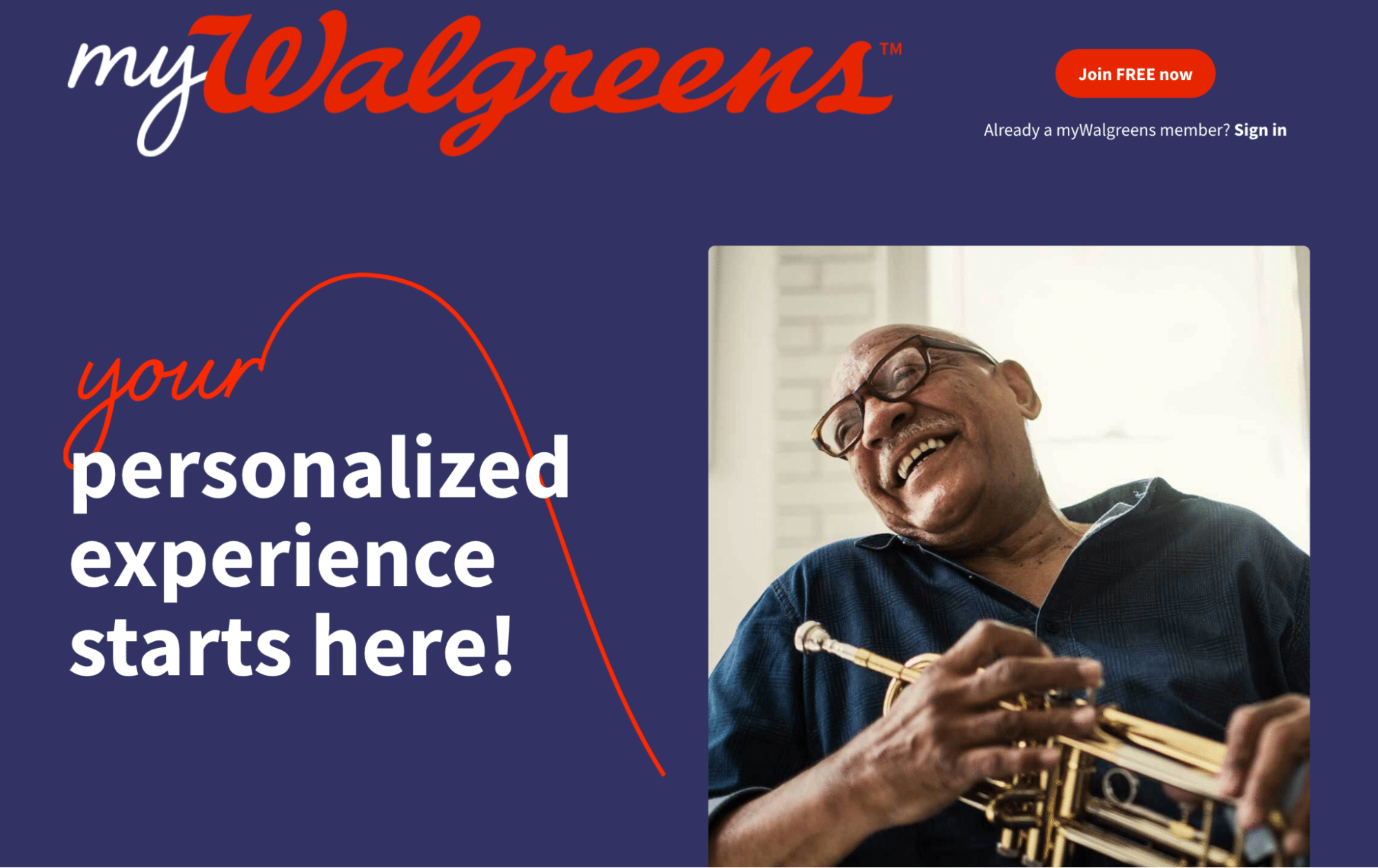
Source: Walgreens
Walgreens is another brand that’s been widely mentioned in many triumphant omnichannel customer experience examples. The success lies within their mobile application. Walgreens allows users to check and refill prescriptions without calling their pharmacy, find deals on products in physical stores, and make orders to pick up at the nearest location. Customers can even use the application to set up reminder alerts for renewing their prescriptions.
Walgreens further enhances their customer service by introducing the Walgreen rewards balance programme, myWalgreens. Customers are encouraged to earn points by completing the following actions:
- In-store purchases
- Online purchases
- Activity tracking by connecting fitness apps to the Walgreens app
- Filling out vital health information surveys
- Getting in-store vaccinations and more
Customers can turn these points into cash and redeem them during in-store or online purchases. Walgreens definitely designed the brand’s omnichannel experience with a customer-centric mindset, and strives to make every touchpoint as smooth as possible, online and offline.
They’re another great example of using these strategies throughout the pandemic. They introduced ‘Walgreens Find Care’. This is an expansion of their telehealth programme, and it includes a Covid-19 risk assessment. Users can easily use a mobile app or computer to search for telehealth providers and connect with a doctor or nurse. The brand uses a mobile-focused app to improve both online and offline customer experience in every possible way, truly realizing the spirit of omnichannel experience.
7. TopShop
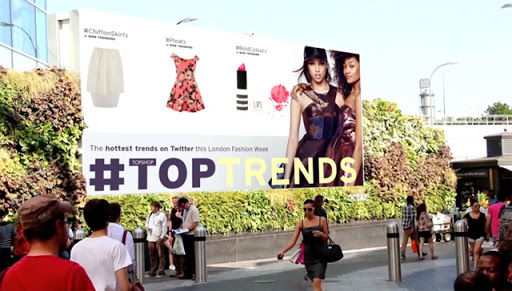
Source: TopShop
As an online clothing brand, TopShop have integrated social media into their omnichannel customer experience brilliantly. For London Fashion Week, the brand set up several digital signage boards nearby their physical stores, showcasing a series of garments regularly. Interestingly, the displaying content is synced with TopShop’s twitter data. When a customer sends a tweet using the hashtag #LFW, it will show up on the digital billboard along with the latest fashion trend.
This creative marketing campaign successfully caught the attention of many passersby, boosting website visits as well as brand awareness. Since all the billboards are set up just ten minutes away from each TopShop store, shoppers can instantly visit the nearest shop and receive their desired products immediately. In fact, TopShop experienced a 75% boost in sales with this #LFW campaign alone.
Start your omnichannel strategy today
There’s no doubt that omnichannel customer experience is the future for all businesses. From sales, to marketing, to customer support departments, omnichannel integrating will only deliver its utmost performance when you align your business goals with the help of technology.
If you haven’t started with omnichannel customer experience, the above examples may give you some directions on where to start. If you’re already implementing omnichannel services, you can always look for improvements. Remember: it’s not just about being available on multiple platforms. It’s about integrating those platforms, and building one seamless, easy-to-use brand experience.
Originally published Jul 15, 2021, updated Jan 16, 2023
